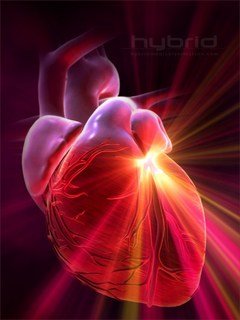The heart is not a pump

The heart not a pump
I was surfing the web doing some regular researching and came across something very interesting that caught my attention.It was a whole layout on how the heart is not a pump and after looking into it more it had my discernment meter going all over but to landing on a certain choice after pondering on it.
The heart is not a pump and does not physically pump blood throughout the body. It is an electrical device that charges the blood the it comes oxygenated from the lungs to into the left atrium then drops down into the left ventricle then "boom" your heart gives it a massive infusion of voltage causing it to spin in a spiral helic circular motion out into the aorta.
It then gets peizo electrically charged through every pump and pass. This electricity pumps the cells in the arterial vessels and that is what takes the blood throughout the body down to the feet.The pump in the heart is not enough on its own to flow your blood through your hole body. Just sounds a bit far fetched visualizing and thinking about it.
The heart is a charger
When one is being abused or in a situation of terror your heart will pump rapidly excreting adrenaline and you are know at your physical peak. The Flight or flight scenario where you are at the body's highest electrical output to defend. It mobilizing all electric available energy to handle a given situation. (mom lifts car story)
Everything in biology is crystal based. So an example of the charge that can go along with the peizo crystals creates voltage. The crystal proteins in your body throughout your DNAcan i believe definatly interact with all the cells in the cytoplasm of ones blood, Heres part of an extensive article from aetherforce.com that ill link below:

Image source
The fact that the heart by itself is incapable of sustaining the circulation of the blood was known to physicians of antiquity. They looked for auxiliary forces of blood movement in various types of etherisation' andpneumatisation’ or ensoulement of the blood on its passage through the heart and lungs. With the dawn of modern science and over the past three hundred years, such concepts became untenable. The mechanistic concept of the heart as a hydraulic pump prevailed and became firmly established around the middle of the nineteenth century.
The heart, an organ weighing about three hundred grams, is supposed to pump' some eight thousand liters of blood per day at rest and much more during activity, without fatigue. In terms of mechanical work this represents the lifting of approximately 100 pounds one mile high! In terms of capillary flow, the heart is performing an even more prodigious task offorcing’ the blood with a viscosity five times greater than that of water through millions of capillaries with diameters often smaller than the red blood cells themselves! Clearly, such claims go beyond reason and imagination. Due to the complexity of the variables involved, it has been impossible to calculate the true peripheral resistance even of a single organ, let alone of the entire peripheral circulation. Also, the concept of a centralized pressure source (the heart) generating excessive pressure at its source, so that sufficient pressure remains at the remote capillaries, is not an elegant one.
Our understanding and therapy of the key areas of cardiovascular pathophysiology, such as septic shock, hypertension and myocardial ischemia are far from complete. The impact of spending billions of dollars on cardiovascular research using an erroneous premise is enormous. In relation to this, the efforts to construct a satisfactory artificial heart have yet to bear fruit. Within the confines of contemporary biological and medical thinking, the propulsive force of the blood remains a mystery. If the heart really does not furnish the blood with the total motive force, where is the source of the auxiliary force and what is its nature? The answer to those questions will foster a new level of understanding of the phenomena of life in the biological sciences and enable physicians to rediscover the human being which, all too often, many feel they have lost.
Just another thought when thinking about all this I always found it strange from growing up seeing the defibrillator being used whether on movies or just visually picturing it.The electric shock to get the heart going again seems all the more sensical to me now though I am a electric universe model believer with the powers of attraction and repulsion, I reckon makes it easier for myself to pick up on this. I also think that way of thinking help me with quantum physics cause the normal laws dont apply. In the electric model things have no set circumstance just instant.
 /FOLLOW/
/FOLLOW/Your comments and feedback are of the most value to me here. I Thank you for your honored visit
--------------------------------------------------------------------------------------------------------
Some of my other works:
Confined Link
When she was here Link
The discussion Link
Blog on Steemit Link
Great post... really awesome.. Hats off to you....
Thanks once again for your comments today.
This gem of a post was discovered by the OCD Team!
Reply to this comment if you accept, and are willing to let us promote your gem of a post! By accepting this, you have a chance to receive extra rewards and one of your photos in this article will be used on our compilation post!
You can follow @ocd – learn more about the project and see other Gems! We strive for transparency.
Accepted and appreciated.
Sorry I missed this post. Followed.
You may also be interested in the work of Gerald Pollack. I have a podcast linked on this post,
https://steemit.com/health/@lifeworship/the-heart-is-not-a-pump
Pollack is a great resource. Marcel Vogel is another big puzzle piece. Aetherforce just started up on steemit. Check us out!